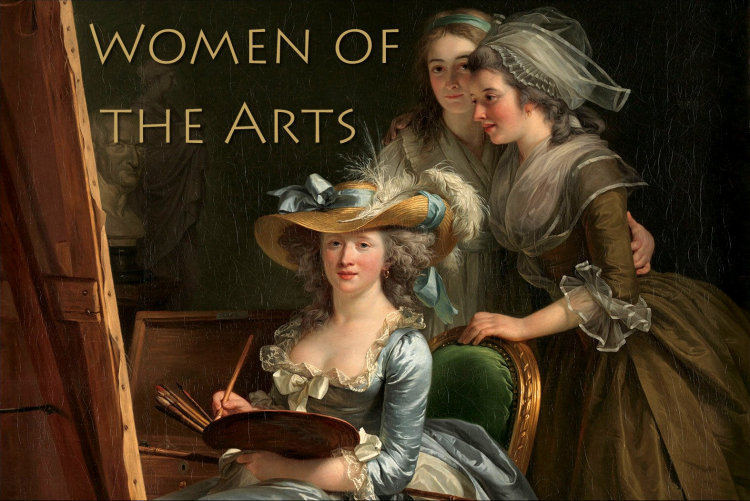GO TO: [A–C] [D–F] [G–K] [L–N] [O–R] [S–U] [V–Z]
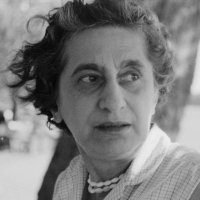
Anni Fleischmann came to the Bauhaus in 1922, she hoped to study painting, but the textiles workshop was the only area that would take her. But threads, as she said, won her over, and her career in textiles virtually erased any distinction between "applied" and "fine" arts. She emigrated to the US with her husband Josef Albers, and taught at many of the same institutions. 6.

Raised in New England by her Transcendentalist parents, Bronson and Abigail Alcott, Louisa knew such luminaries as Emerson, Thoreau, and Hawthorne. When her family encountered financial trouble, she began writing lurid fiction, like Jo March in her novel Little Women (1868), based upon her own family and three sisters. She was an abolitionist and feminist all her life, and never married. 8.
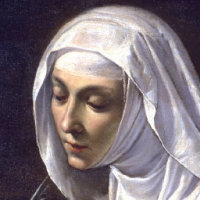
Raffaella Aleotti showed a precocious musical talent, and her teacher suggested she enter the convent of San Vito in Ferrara to further her skills. She published a number of sacred text settings. She may have been either the sister or indeed the same person as Vittoria Aleotta, a nun who also published sacred settings around the same time. The image, which has been used on CD covers, is almost certainly not her portrait. 2.
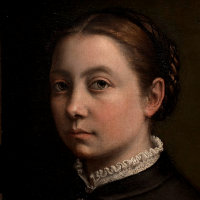
Though given a good humanist education by her noble parents, she obtained her artistic training through apprenticeships with Cremona painters. Her long career, mainly as a portraitist, included a decade as painter to the Spanish royal court. 3.
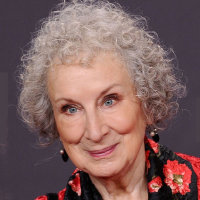
Atwood's novels such as The Handmaid's Tale (1986) and Alias Grace (1996), addressing issues issues such as gender, identity, and the environment, have won her numerous prizes (including the Booker Award, twice), been adapted to film and television, and gained her a wide readership. 11.
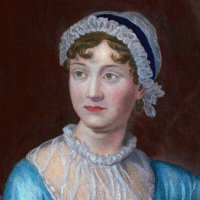
He six full-length novels have established her as a major English novelist, and an important transitional figure between 18th-century Sensibility and 19th-century Romanticism. The portrait is based on a sketch by her sister Cassandra. 8.
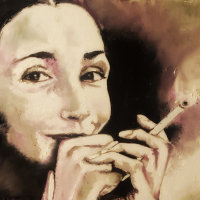
Pina (Philippine) Bausch trained with the German Expressionst choreographer Kurt Joos, then after two years at the Julliard in NYC returned to take over his company. In 1970, she founded Tanztheater Wuppertal, a company which enabled her to develop her style of visceral movement, intense emotion, and the use of non-traditional elements, such as the rain in Vollmond or an entire stage covered with soil in The Rite of Spring. 7, 12.
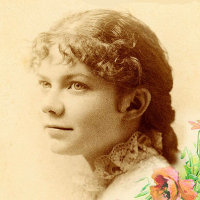
Her performing career as a child prodigy was curtailed by her marriage to a wealthy doctor, and for a long time she published her compositions under the name "Mrs. H.H.A. Beach." Most of her numerous works are small in scale, but her Gaelic Symphony of 1896 was the first symphony published by a woman in America. 5.
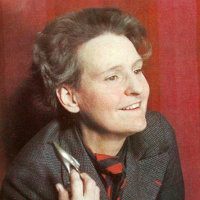
Born in Baltimore, Beach moved with her family to Paris at age 11 when her father took the pulpit at the American Church. She returned there in 1918 to study French literature, but soon opened an English-language bookshop, Shakespeare and Company, which became a Mecca for expatriate writers, including James Joyce, whose Ulysses she published after it had been rejected elsewhere. 10.
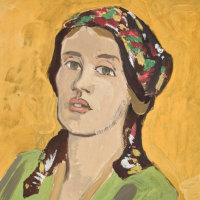
The elder sister of Virginia Woolf (née Stephen), Bell was also a member of the Bloomsbury Group, the wife of art critic Clive Bell, and lover of Duncan Grant and Roger Fry. She painted in a mildly Modernist style characterized by simplified forms and lucid color. The image here is a self-portrait. 9.
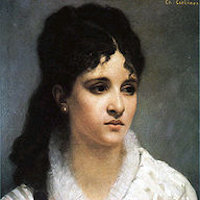
Though trained at the Paris Conservatoire under César Franck and others, Bonis' parents made her withdraw to marry a much older man who did not like music. Only after she had borne three children did she return to composition, but then developed quite a prolific career. Saint-Saens said of her Piano Quintet, "I did not know a woman could write such music!" 1.
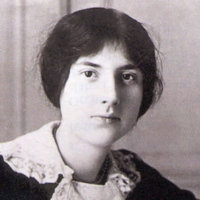
While still a young child, Lili attended the lessons of her elder sister Nadia at the Paris Conservatoire, and soon came to the attention of Gabriel Fauré and other leading musicians in her own right. Although plagued by illness, she became the first female winner of the coveted Prix de Rome, and had a commission to write an opera to a text by Maeterlinck, but died at 24 with tragically little of her potential realized. 6.
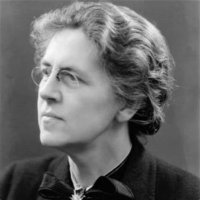
Nadia Boulanger became one of the great composition teachers of the 20th century, helping shape the careers ofVirgil Thompson, Aaron Copland, Elliot Carter, and many others. Although a composer herself, she put her own work aside to support that of her younger sister Lili, whom she called the true genius in the family. 6.
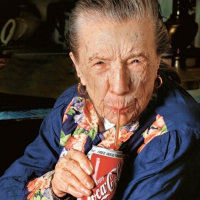
Bourgeois was born and trained in France, but moved to New York in 1938. It was only there that she turned to sculpture, the art form in which she is best known, working in a variety of media and every scale from intimate the monumental. Although her work is abstract, it often has human references. 11.
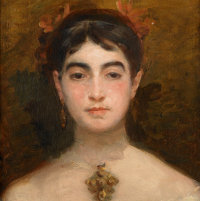
Marie studied with Ingres then worked making official copies at the Louvre. She married Félix Bracquemond in 1869. He taught her engraving, but she found the medium too restricting and fell instead into the orbit of the Impressionists, participating in three of their exhibitions. Most of her paintings have been lost or destroyed, perhaps due to her husband's jealousy. 9.

Born to a wealthy Puritan family in England, Bradstreet was well educated. She emigrated to Massachussetts shortly after her marriage to an official in the colony. Her collection, The Tenth Muse Newly Sprung up in America (1650), shows her love for her husband, her modest pride in her abilities as a woman, and her delight in the natural world. 5.
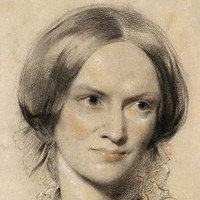
Charlotte was the oldest and longest-lived of the three Brontë sisters (with Emily and Anne), all of whom were novelists. Her most famous book is Jane Eyre, published pseudonymously in 1847; her later Shirley (1849) was less successful. 8.

Elizabeth Barrett had established herself as a poet well before she met Robert Browning, whom she eventually married at the age of 40, and was disinherited by her father for doing so. Her sequence of love-letters to Browning, Sonnets from the Portuguese (1850) have been widely influential. 6.
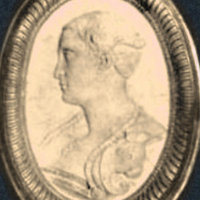
Francesca was the daughter of Giulio Caccini, a member of the Florentine Camerata, and one of the earliest composers of opera; her own Liberazione di Ruggiero (1625) is regarded as the first opera composed by a woman. Her career at the Medici court was interrupted by two marriages, the second to a nobleman; both husbands and her only child died after a few years. 3, 4.
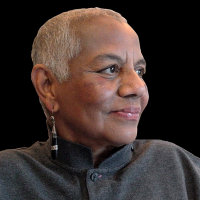
Peggy Cooper, the daughter of a wealthy African American businessman in Mobile, came to George Washington to study, and almost immediately became an activist for Black causes, especially in the arts. Using the social and political skills she had developed, along with considerable determination and charisma, she co-founded the Duke Ellington School for the Arts, one of the premier launching pads for performers of color in the country. 10.
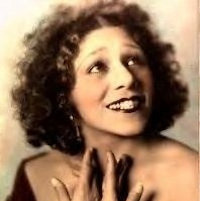
Born in Rochester before her family's move to Baltimore, Blanche Calloway was the elder sister of jazz musician Cab Calloway and the first to ender the profession. She enjoyed a 50-year career as a singer, bandleader, and composer. 6.
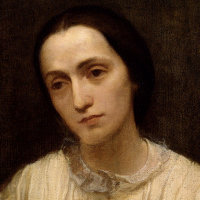
Julia Margaret Pattle was born in British India, and remained there until her mid-forties as a society hostess until her husband retired to England in 1845. In 1863, when she was 48, she received a box camera as a Christmas present from her daughter, as "something to amuse her." Indeed it did, and she became famous for her portraits of famous sitters, such as her neighbor Tennyson, and inventive restagings of literary works. 1.

As a portraitist, Carl "made paintings of notable and royal people in the United States, Europe and Asia. She spent nine months in China in 1903 painting a portrait of the Empress Dowager Cixi for the St. Louis Exposition, and wrote a book about the experience on her return." [Wikipedia] 4.
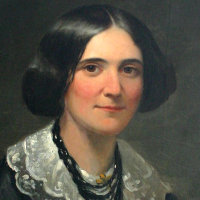
Although receiving little formal education, Alice and her younger siser Poebe (b.1824) began publishing in local newspapers in their teens, and in 1849 moved to New York where they established a literary salon. She also wrote three novels and three books of short stories. 1.
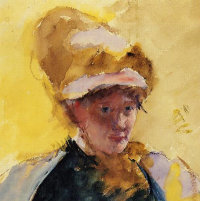
The daughter of a wealthy Philadelphia family, Cassatt studied in Paris and settled there in 1874. She became friends with the Impressionists, especially Degas, and exhibited in four of their shows. An early feminist, her own work featured especially the everyday lives of women. She also had an influence in persuading her wealthy friends back home to buy Impressionist paintings. 1, 5.
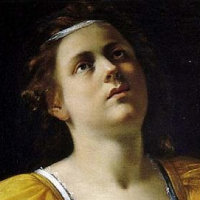
Casulana was the first woman to publish a collection of her music (Venice, 1568). Other than that and her subsequent publications, we know almost nothing about her background and training. [There is no evidence that the image is actually her portrait, as traditionally claimed.] 3.
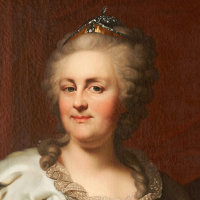
"Under her long reign, inspired by the ideas of the Enlightenment, Russia experienced a renaissance of culture and sciences, which led to the founding of many new cities, universities, and theaters; along with large-scale immigration from the rest of Europe" [Wikipedia]. She also founded the Smolny Institute of Noble Maidens, the first state-financed higher education institution for women in Europe. 4.
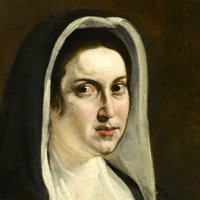
"She was a nun at the convent of S Agostino, Modena, and is known only by her volume of eight part Motetti spirituali published in 1619." [Grove Women Composers]. The image is generic and not a portrait. 2.
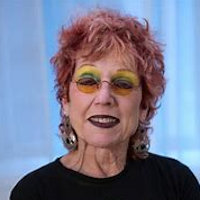
Judy Chicago was born Judith Sylvia Cohen, in a long line of rabbis. Her father, though, was a labor organizer, and there a strong thread of activism runs through her own feminist work. She is most famous for The Dinner Party (1979), a multi-media celebration of powerful women throughout history. 11.
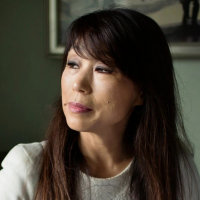
After studying in her native South Korea, Chin won several international awards, which supported further study in Germany, where she has remained. The striking musical language of her concertos for violin (2004) and cello (2009) has been honored by further awards, and in 2007 her opera Alice in Wonderland with text by David Henry Hwang was premiered in Munich. 12.
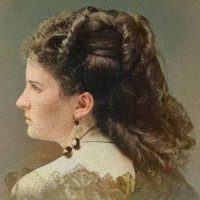
Born Katherine O'Flaherty and of mixed Irish and Louisiana Creole heritage, she married a New Orleans cotton broker and moved to the city. She began writing in the 1880s to pull herself out of a depression caused by the loss of her mother, her husband, and his business, and soon became famous as the author of short stories with feminist themes such as The Story of an Hour (1894) and the novel The Awakening (1899). 8.
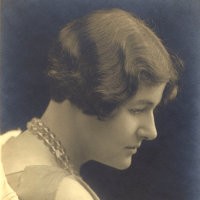
A professional violist and noted composer of chamber music, Clarke was born in England of an American father and German mother; she studied in London, but her career took her also to America, where she was supported in part by Elizabeth Sprague Coolidge. Morpheus, her first work to be performed in the US, was submitted under a male pseudonymn; it was praised while pieces under her own name were not. 10.

Claudel became in turn the apprentice, lover, and rival of August Rodin, producing sculptures of remarkable energy and innovation. After the inevitable break with Rodin, however, she had difficulty obtaining commissions; her father, who had been supporting her financially, died; and her mother had her committed to a mental asylum, where she died 30 years later. 6.

The Neapolitan Colbran was the first wife of Rossini and, in his opinion, the greatest singer of his music. It was for her that he wrote the bravura mezzo-soprano leads in many of his operas. She also published four volumes of songs dedicated to various noble patrons, considerably less difficult than those that she herself sang, but with a charming musicality. 7.
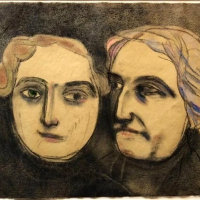
Dr. Claribel Cone and her pianist sister Etta (1870–1949), were among the great patrons of Modernist French art in the earlier 20th century. They bequeathed the contents of their apartment to the Baltimore Museum of Art, making it one of the greatest collections of Matisse in the world, plus choice works by numerous other artists. The posthumous double portrait is by RB Kitaj. 10.
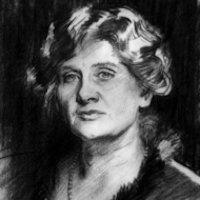
A pianist and lover of chamber music, Coolidge used family money to sponsor four players from the Chicago Symphony to form the Berkshire String Quartet, a project that eventually morphed into the Tanglewood Festival. She built the Coolidge Auditorium at the Library of Congress, and commissioned works from composers such as Barber, Bartok, Britten, and Aaron Copland's Appalachian Spring, 10.
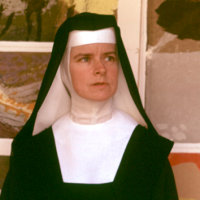
Born in Iowa, Frances Elizabeth Kent entered the Californian Sisters of the Immaculate Heart at age 18, and took the name Sister Mary Corita. The order was known for its liberalism and respect for creativity, and Sister Corita flourished, teaching herself silk-screen printing and eventually becoming head of the college art department. Her increasing participation in social activism, however, set her at odds with ger Cardinal, and she left the order in 1968 to continue her work on the East Coast under the name Corita Kent. 2.
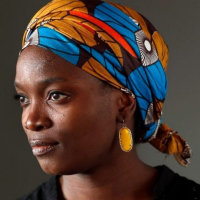
Crosby is a Nigerian-born visual artist working in Los Angeles. Through her art Akunyili Crosby "negotiates the cultural terrain between her adopted home in America and her native Nigeria, creating collage and photo transfer-based paintings that expose the challenges of occupying these two worlds" [Smithsonian citation]. She was awarded a MacArthur Foundation "genius" grant in 2017. 12.
GO TO: [A–C] [D–F] [G–K] [L–N] [O–R] [S–U] [V–Z]
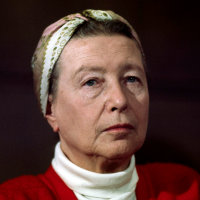
Simone Lucie Ernestine Marie Bertrand de Beauvoir was a French novelist and essayist, whose book The Second Sex (1949) is a foundation feminist text. She was also closely associated with the Existentialist philosophy of Jean-Pau Sartre, her lifelong (though far from exclusive) companion. 11.
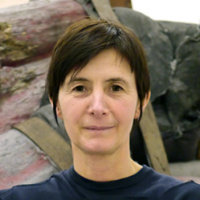
"De Bruyckere specializes in sculpture in various media including wax, wood, wool, horse skin and hair. Since the early 1990s many of her major works have featured structures involving blankets. Their use is symbolic both of warmth and shelter, and of the vulnerable circumstances such as wars that make people seek such shelter." [Wikipedia] 12.

Elaine Fried married Willem de Kooning in 1943, and he became her teacher. While sharing some Abstract Expressionist qualities with her husband, her own work was mostly figurative, including portraits of John Kennedy and others. Though she tirelessly promoted her husband's work and exhibited under their shared name, she chafed at always being seen in his shadow. 9.

Dame Ninette de Valois had a short career dancing with Serge Diaghilev's Ballets Russes, but a much longer ones as a choreographer and founder of the company and school that would eventually become the Royal Ballet, one of the principal guardians of classical technique in the world. 7.
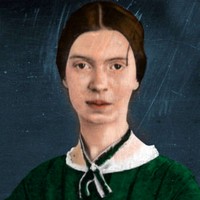
As she lived in Amherst for her entire life, latterly refusing to leave her family home, Dickinson's prolific output was virtually unpublished in her lifetime, and was subject to editing after her death to bring it more in tune with contemporary aesthetics. But it is precisely the unconventional nature of her verse, with its short lines and slant rhymes, that has led to her recognition as one of the leading Americal poets of her time. 8.
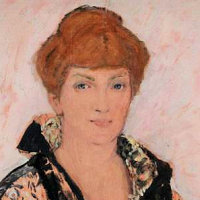
The daughter of wealthy German immigrants, Dreier was able to pursue her own career as a painter and to support the work of others. The Société Anonyme, which she founded in 1920 with Man Ray and Marcel Duchamp, was the first permanent collection of modern art in the United States (although later eclipsed by MoMA). 10.
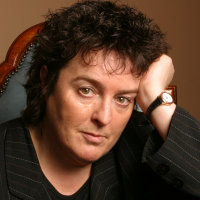
Dame Carol Ann Duffy was Poet Laureate of the United Kingdom from 2009 to 2019, the first woman, the first Scot, and the first openly gay person to hold that position. "Her poems address issues such as oppression, gender, and violence in accessible language." [Enc. Brit.] 12.
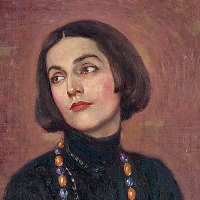
Tiring of the restrictions of classical ballet, Duncan spread her own gospel of a quasi-sacred dance based on nature and the everyday movements of the female athletic body. She came to Europe and toured for a while with Loie Fuller, who had similar feminist goals. She was killed when one of the long scarves that were her signature caught in the wheel of a car in Monte Carlo. 7.

The author of over a dozen novels, Dunmore won the inagural Orange Prize for Fiction with A Spell of Winter (1995) and the Costa Book of the Year Prize for her posthumous poetry collection Inside the Wave.
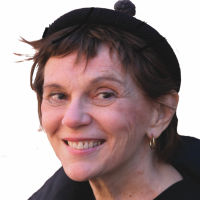
Edelson began painting portraits of mothers and children in a style influenced by Post-Impressionism, but around 1970 she shifted to address explicitly feminist themes, turning to collage and other media. Her best-known work (1972) is a parody of Leonardo's Last Supper with the heads replaced by photos of contemporary female American artists. 11.
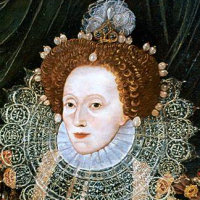
The Elizabethan Age, denoting the long reign of Elizabeth I (1558–1603), is often referred to as the "English Renaissance." Not only Shakespeare but numerous other geniuses in all branches of art flourished under her reign. While it is probable that her personal sponsorship of individual artists was limited, she consciously cultivated an atmosphere of excellence that encouraged such a flowering. 4.
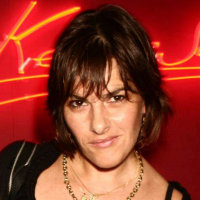
Notorious for her confessional installations, Everyone I Have Ever Slept With 1963–1995 (a tent appliqued with the names of her many partners) and My Bed (the debris of a depressed week in bed in 1999), Emin is also Professor of Drawing at the Royal Academy,
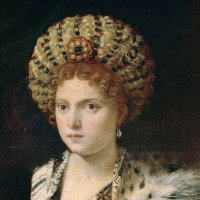
Born to a noble family in Ferrara, Isabella had an outstanding intellect and received an excellent education in statecraft, history, languages, music, and dancing. On her marriage, she became Marchioness of Mantua, and went on to become one of the best-known women of the Renaissance and an icon of fashion. At one time or another, she supported virtually all the greatest artists and writers of the Renaissance. 4.
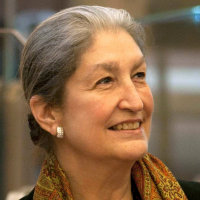
In addition to her work in the United States (as co-founder, for example, of the Indianapolis Ballet), Fortune has made a great impact in Florence with a series of projects to document and restore the work of artists who were women. Her foundation Advincing Women Artists continues that work today. 2.

A second-generation Abstract Expressionist, she was the first to develop the technique of pouring thin paint onto unprimed canvas, greatly influencing several of her better-known contemporaries. 9.
GO TO: [A–C] [D–F] [G–K] [L–N] [O–R] [S–U] [V–Z]
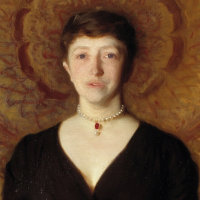
A year-long trip to Europe to recover from a miscarriage in 1866 both restored Isabella's health and sparked her life-long interest in collecting. After the death of her wealthy Boston husband Jack Gardner in 1898, she commissioned a house in the style of a Venetian palazzo to house her collection, which now included numerous European masterpieces, objets d'art of all kinds, and many works by her friend John Singer Sargent. This house is now a museum. 10.

The daughter of a Unitarian minister who gave up his position in the North for reasons of conscience, Mary Stevenson married another minister, who moved to Manchester, which became the disguised setting for North and South (1855). She published this, its predecessor Cranford (1853), and a biography of Charlotte Brontë (1857) under the name "Mrs Gaskell," but used a pseudonym before that. 8.
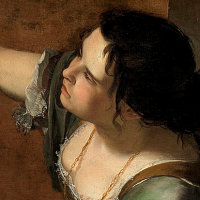
Trained by her father Orazio Gentileschi, Artemisia began producing work in her teens that outstripped his in dramatic power and psychological observation, especially in her portrayals of strong women. She was the first woman to be elected to the Florentine Academy and, at 23, one of its youngest members. 3.
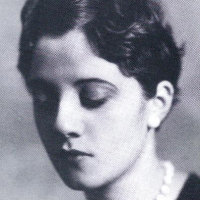
Although younger than her brothers George and Ira, she was the first of the family to perform professionally. After her marriage to Kodachrome inventor Leopold Godowsky, she left the stage, but continued to develop her other artistic talent, as a painter. 6.

Trained as a restorer of old master paintings, and working professionally for the Metropolitan and other major museums, Gilje also paints exact but subtly altered version of famous artworks as the subject of her own art, producing a kind of practical and often feminist art criticism. 1.

The daughter of a successful writer, Gonzalès was introduced to Paris art circles at an early age. When she was 20, she began to study with Édouard Manet, and her painting remains close to her mentor's style. Like him, she is often described as an Impressionist but never took part in the group exhibitions. 1.
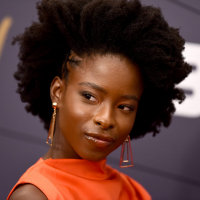
Gorman sprang to national attention by delivering her poem "The Hill We Climb" at the inauguration of President Biden in 2021—the youngest inagural poet ever at 22. She studied sociology at Harvard, and became the first National Youth Poet Laureate. An activist, her poetry focuses on feminist and racial themes. 12.

Graham technique is at the root of much modern dance, even today. In her 70-year career, she collaborated with major composers and designers to create over 180 works, ranging from the iconic Americanism of Appalachian Spring (1944) to treatments of mythological subjects, such as the Medea story in Cave of the Heart (1948). 7, 10.
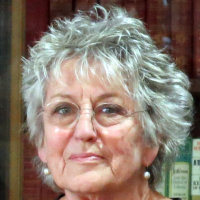
Born in Australia, Greer has taught at English universities since 1964. Her 1970 book The Female Eunuch became an instant feminist manifesto. She insists that her activism is not about equality with men, which she considers limiting, but "the freedom of women to define their own values, order their own priorities and decide their own fate". 11.
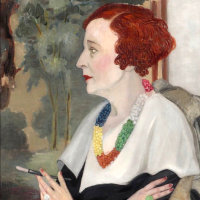
For most of her life, Peggy Guggenheim mixed with avant garde artists and writers, collecting their work and advancing their careers though her Art of This Century gallery. She moved in the 1950s to Venice, where her house on the Grand Canal and its extraordinary collection is one of the most-visited attractions in the city. 10.
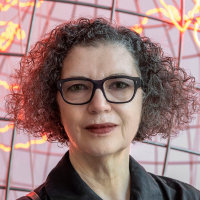
Born in Lebanon to exiled Palestinian parents, Hatoum was caught in London when the Lebanese civil war broke out in 1975. Using that as a base, she has "traveled extensively and developed a dynamic art practice that explores human struggles related to political conflict, global inequity, and being an outsider." [Wikipedia] 12.
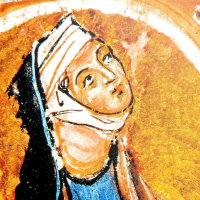
Abbess of the monastery of Rupertsberg on the Rhine, and composer of the music drama Ordo Virtutum, she achieved extraordinary fame as a theologian, poet, composer, manuscript illuminator, and natural scientist, becoming known as "The Sibyl of the Rhine." The Catholic Church has long revered her as a saint. 2.

Höch was a leading Dada artist and one of the inventors of photomontage. Much of her work had a political or social agenda, and often concerned the changing roles of women during the interwar era. 9.

The success of the Battle Hymn of the Republic (1861) gave her the confidence to break free of the restrictions placed upon her by her husband (who objected to the over-personal nature of her poetry), and devote herself first to abolitionist and then to suffragist causes. 5.
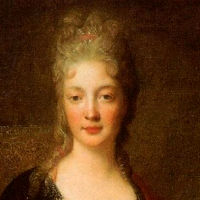
The daughter of an instrument builder, Jacquet was a child prodigy who at the age of ten was called "the marvel of our century" by a Paris paper. Louis XIV took her to Versailles and put her into the care of Mme. de Montespan, under whose protection she produced works in most genres including an opera, Céphale et Procris (1694). 4.
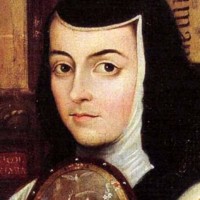
Educating herself mainly by reading in her grandfather's library, Inés showed a precocious talent that caught the attention of the Spanish Vicereine in Mexico, who became her sponsor. Although she entered a convent, her cell became a literary salon, earning her the nickname "The Tenth Muse." But her outspoken writings offended her bishop, who forced her to abandon literary pursuits. She died soon after. 2.
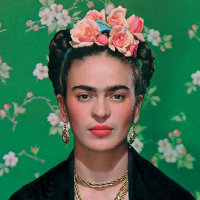
Although she had successful exhibitions in Paris and New York in the late 1930s, Kahlo's fame was largely overshadowed in her lifetime by that of her much older husband Diego Rivera. Since her death, however, interest has grown exponentially in the self-revealing nature of her work, which unites traditional Mexican qualities to a touch of Surrealism. 11.
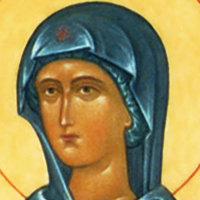
Kassia is the earliest woman who left signed compositions, all of sacred chant. She was also apparently a poet; her wit made her a candidate to be the bride of Emperor Theophilos, but this came to nothing; she may have been too sharp for him. The image is from later and not a portrait. 2.
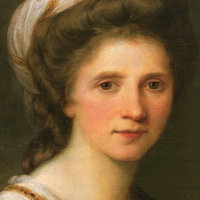
Moving to London in her twenties, she became a foundation member of the Royal Academy as a portrait painter, but moved to other subjects, first in England and later in Italy. 5.
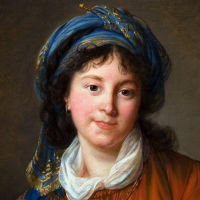
Kourakina (née Golovina) became the most prolific Russian composer in the era of Catherine the Great. A singer and harpist herself, she wrote mainly songs for salon performance, but these were published and distributed widely. After her husband quarreled with Tsar Paul I in 1815, she moved to Paris, where she hosted a salon of her own. 4.
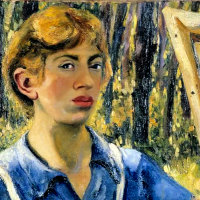
The strong color and design of Krasner's artworks, which combine painting and collage, have since earned her recognition as one of the major figures in the Abstract Expressionist movement, but between 1945 and his death in 1956, she remained somewhat in the shadow of her husband, Jackson Pollock—a complex relationship, but largely a mutually sustaining one. 9.

Immediately recognizable for her use of advertising slogans and photo-collage in black, white, and red, Kruger has been a leading voice in feminist activism since the 1970s. 11.
GO TO: [A–C] [D–F] [G–K] [L–N] [O–R] [S–U] [V–Z]

Born to a Dutch father and a Caribbean mother, Laméris was raised in California and has a degee in art from from UC Santa Cruz. She has published two award-winning books of poetry: The Moons of August (2014) and Bonfire Opera (2020). [The image is based on a portrait by Sargent, and may or may not represent the artist herself.] 1.
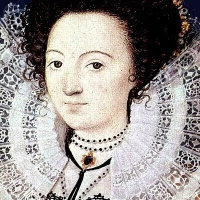
"Aemilia Lanyer was the first woman writing in English to produce a substantial volume of poetry designed to be printed and to attract patronage. […] The volume is also arguably the first genuinely feminist publication in England: all of its dedicatees are women, the poem on the Passion specifically argues the virtues of women as opposed to the vices of men, and Lanyer's own authorial voice is assured and unapologetic." [Poetry Foundation] 4.
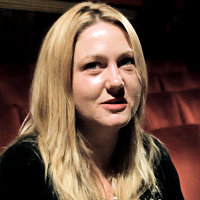
Selected by the Poetry Book Society as a "Next Generation Poet," Lee-Houghton has won or been shortlisted for most major British poetry awards. Her uncompromisingly honest writing deals with her own problems as a survivor of childhood sexual abuse, mental illness, and drug addiction. 12.
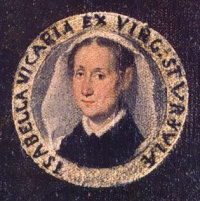
The daughter of a noble family from Novara, Isabella entered a convent at age 16 and remained there for the rest of her live, eventually becoming its Superior. She is credited with over 200 compositions published between 1640 and 1700. 2.

Though born in England, Macdonald met her future husband, Charles Rennie Mackintosh, at the Glasgow School of Art; they married in 1900. Working first with her sister Frances and later with her husband, she produced a wide range of decorative artwork which was a defining feature of the Glasgow style of art nouveau, and was exhibited widely in Europe and America. Charles said of her: "You have genius; I only have talent." 6.
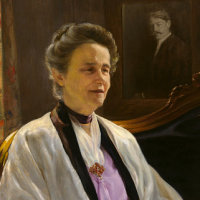
A pianist and an acclaimed performer of the music of her husband Edward MacDowell, Marian bought a farm in New Hampshire as a retreat for him. After his death in 1908, she secured his legacy by inviting artists of all disciplines for extended creative residencies, a project that has hosted over 8,000 MacDowell Fellows in the century or more since its inception. 10.
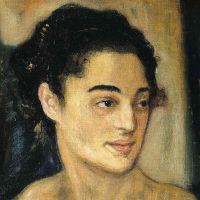
"Alma Schindler Mahler Gropius Werfel, mistress to a long succession of brilliant men, married three of the best known: the composer Gustav Mahler, the architect Walter Gropius, and the writer Franz Werfel. Her admirers regarded Alma as a self-sacrificing figure of inspiration to great artists. Her detractors saw her as a self-aggrandizing social climber, a boozy, bigoted, vengeful harlot—or as one contemporary put it, 'She was a grande dame and at the same time a cesspool'.” [Book jacket to Oliver Hilmes: Malevolent Muse, 2015]. 6.
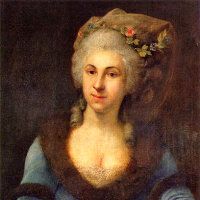
The daughter of a Neapolitan of Spanish descent who had moved to Vienna, Martines was educated under the guidance of Haydn, Metastasio, and others. Her works, both vocal and instrumental, tend to be showy and virtuosic. In 1772, Charles Burney said of her work that is was "neither common, nor unnaturally new." 5.
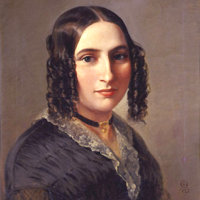
Fanny received the same musical education as Felix Mendelssohn, her younger brother, and her compositional output is similarly large. Much of it, however, was unpublished in her lifetime or issued in her brother's name. In 1830, she married artist Wilhelm Hensel. 6.
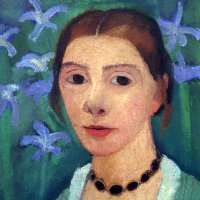
Paula Becker was a leading painter in the German Expressionist movement, and the only significant woman in the circle. She was the first woman to depict herself both nude and pregnant, and also the first woman to have a museum (in Bremen) entirely devoted to her art. In 1901, she married Otto Modersohn, an older and less adventurous artist. 6.
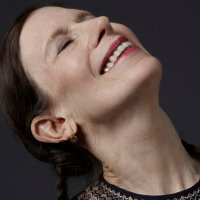
Monk was born in Peru, where her mother, a pop singer, was on tour. Her creative career has been remarkable eclectic, including singing, composition, choreography, film directing, and just about any endeavor that breaks the boundaries between the classical and popular, and the perceived distinctions between genres. 10.
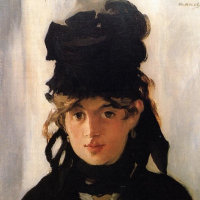
A descendant of Fragonard, pupil of Corot, sister-in-law of Manet, and later member of the Impressionist group, she brought a fine sensibility to her mainly domestic subjects painted in her characteristic limpid style. Some of her landscapes, however, could be as strong as any of her male colleagues. The portrait is by Manet. 1, 9.
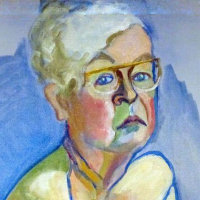
Known for her portraits, Neel's "paintings have an expressionistic use of line and color, psychological acumen, and emotional intensity. Her work depicts women through a female gaze, illustrating them as being consciously aware of the objectification by men and the demoralizing effects of the male gaze. Her work contradicts and challenges the traditional and objectified nude depictions of women by her male predecessors. She pursued a career as a figurative painter during a period when abstraction was favored, and she did not begin to gain critical praise for her work until the 1960s." [Wikipedia] 1.
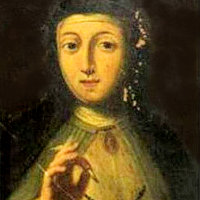
Nelli is the first recorded female artist working in Florence, and her Last Supper in the church of Santa Maria Novella is the earliest treatment of the subject painted by a woman. 2.

Polish by birth, but born in Russia, Nijinska joined the Ballets Russes and went with them to Paris. After assisting her one-year-older brother Vaclav Nijinsky in L'Après-midi d'un faune and The Rite of Spring, she began to concentrate on choreography of her own. Her most famous work is probably Les Noces (1923), to music by Stravinsky. 7.
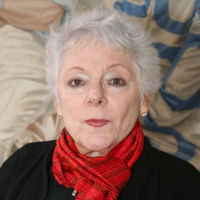
"Many scholars have called Linda Nochlin’s seminal essay Why Have There Been No Great Women Artists? (1971) the first real attempt at a feminist history of art. In her revolutionary essay, Nochlin refused to answer the question of why there had been no 'great women artists' on its own corrupted terms, and instead, she dismantled the very concept of greatness, unraveling the basic assumptions that created the male-centric genius in art." [Amazon product description] 1.
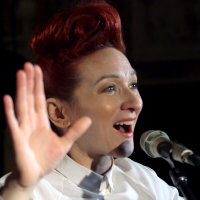
Formerly writing and performing under her then-married name of Worden, Nova is both a performer and composer, addressing feminist themes. Her music straddles the boundaries of pop and classical, including works for instrumental ensembles, choirs, and a one-act opera. 11.
GO TO: [A–C] [D–F] [G–K] [L–N] [O–R] [S–U] [V–Z]
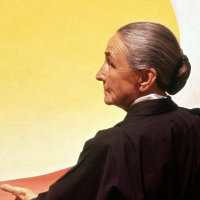
Her near-abstract enlargements of flower and plant forms established her as a pioneer of American modernism. She settled in New Mexico for the last 40 years of her life, adding desert landscapes and bleached skulls to her repertoire of forms that she would revisit in numerous variations. 11.
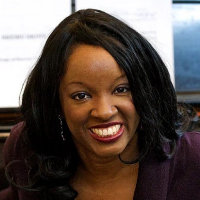
Born in New York, Okoye has an African American mother and a Nigerian father, and he childhood was divided between both countries. No stranger to the large stage, she has writen an opera on the life of Harriet Tubman, and several projects commissioned by US symphony orchestras. 12.
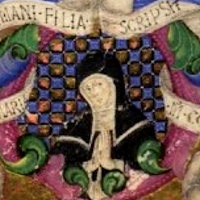
When her father, a wealthy nobleman had to flee Florence on the return of the Medici, Maria entered the convent of San Gaggio, renowned for its artistic workshops. Maria contributed to these as a manuscript illuminator and left one tantalizing self-portrait, but nothing else is known about her. 2.
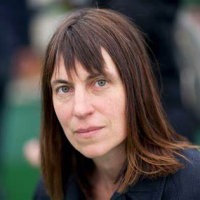
Alice Oswald studied Classics at Oxford, and later became a professional gardener; she is currently Oxford Professor of Poetry, arguably the highest honor for a British poet. Although she has published nine collections and won numerous prizes, her most famous work is Memorial (2011), subtitled "an excavation of the Iliad." 12.
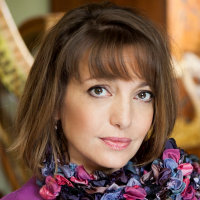
Roxanna is the daughter of Polish emigré composer and conductor Sir Andrzej Panufnik, and studied in London at the Royal Academy of Music. She has had a number of significant commissions for vocal and choral music (including for the coronation of Charles III), and has written an opera. Her Three Paths to Peace, a synthesis of the musical styles of the three Abrahamic religions, was written for the World Orchestra for Peace in 2014 and premiered in Jerusalem. 12.
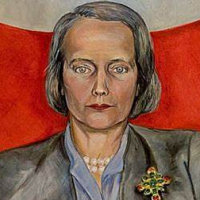
When she divorced her well-connected husband in order to continue studying painting and sculpture in France, her wealthy family disinherited her. Returning to New York in 1933, she had some success as an artist, but took a job in a gallery to make ends meet. So successful was she at this, that she developed a list of clients that made the Betty Parsons Gallery the beating heart of Abstract Expressionism in the fifties and sixties. 10.
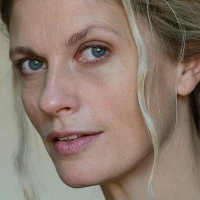
Pite began work as a dancer with Ballet British Columbia and then spent several years with Ballet Frankfurt. She returned to Canada as a choreographer in 2001, and in 2002 founded her own company Kidd Pivot, for which she continues to create new works, in addition to managing a burgeoning career in Amsterdam, Paris, London, and many other centers. 12.
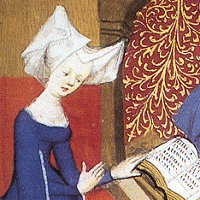
Born in Venice, Christine moved to Paris as a child, when her father became astrologer to the king. She married a court official, then had to support herself by her writing after he died. She wrote poetry and prose in most genres, and is credited as being the first female professional writer of modern times. 3, 11.

Plath began publishing when a student at Smith College. Coming to England, she met and married the future Poet Laureate Ted Hughes, and had two children with him before the marriage collapsed. Her life was punctuated by several attempts at suicide, which finally succeeded, but her conflicting energies gave rise to the poems of her remarkable posthumous collection, Ariel. 6.
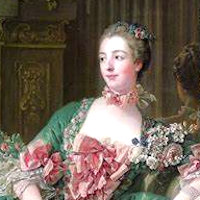
"Jeanne Antoinette Poisson, later Marquise de Pompadour, was the official chief mistress of King Louis XV from 1745 to 1751, and remained influential as court favourite until her death. She was a major patron of architecture and decorative arts, and a patron of the philosophes of the Enlightenment, including Voltaire." [Wikipedia, abridged] 4.
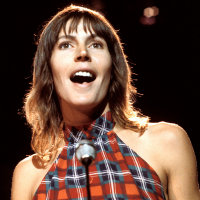
The Australian singer's career took off in the US in the 1970s, with 15 of her records reaching the Billboard top 40. Her 1971 hit, "I am woman, hear me roar," became a kind of feminist anthem. 11.
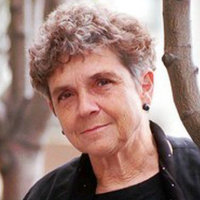
Born in Baltimore, Rich moved from a succinct formalism in her earlier work to a freer style that addressed feminist and lesbian topics. She was widely read and honored with many awards, two of which she refused as an expression of her social and political activism. 11.
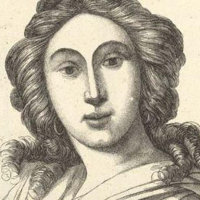
The daughter of one sculptor and wife of another, Roldán was launched on a career that took her to the Spanish royal court. Nonetheless, she died in poverty. Her preferred media were wood and clay, which she then painted with the help of her husband. 3.
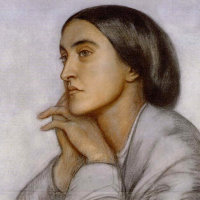
Christina was the younger sister of Dane Gabriel Rossetti and the model for several of his paintings. She began publishing her poetry in 1848. Although remembered for his Christmas carols "Love Came Down at Christmas" and "In the Bleak Midwinter," her popularity declined after her death, but later commentators point to the extraordinary language and psychosexual suggestion in works like Goblin Market (1862), possibly inspired by her volunteer work at a Home for Fallen Women. 1.
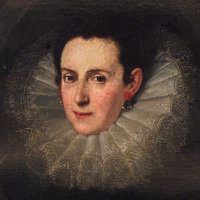
The ground-breaking Bolognese sculptor is the only woman to appear in Girgio Vasari's Lives of the Great Artists. While this is indeed an accolade, the terms in which her career is discussed reinforces masculine ideas about the lesser roles of women. 3.
GO TO: [A–C] [D–F] [G–K] [L–N] [O–R] [S–U] [V–Z]
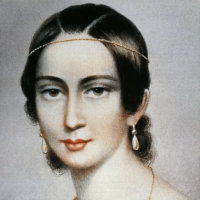
Under the tutelage of her father, Friedrich Wieck, Clara began performing at the age of 9, and soon became one of the leading pianists of her time. Against her father's wishes, she married Robert Schumann in 1840, gave him 8 children, and became his devoted artistic executor; she also had a close relationship with Johannes Brahms. Clara's larger compositions date from before her marriage, but she continued a steady output of smaller works over her entire life. 5.
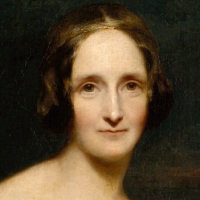
The daughter of the political philosopher William Godwin and the feminist activist Mary Wollstonecraft, Shelley fell in love with the poet Percy Bysshe Shelley when he was already married and eloped with him to the continent to avoid ostracism at home. She wrote her most famous novel, Frankenstein (1818), in response to a competition with Lord Byron, John Polidori, and her lover during a rainy holiday in Switzerland. 6.

Sherman's work consists primarily of photographic self-portraits, depicting herself in many different contexts and as various imagined characters. Her series of 70 Untitled Film Stills (1977–80) were black-and-white take-offs of B-movie films noirs. Later, she moved into large-format color photographs including detailed props and high-chroma color schemes. 11.
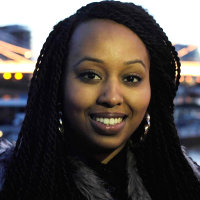
"No one leaves home unless home is the mouth of a shark," writes this Somali/Kenyan emigrant, who became the Young Poet Laureate of London then moved to Los Angeles. Her online poem "For Women Who Are Difficult to Love" caught the attention of Beyoncé, who commissioned a set of linking poems for her 2016 album Lemonade. 12.
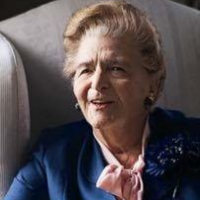
Even as an undergraduate at Wheaton, Catherine Filene was an activist to gain employment opportunities for women. This took her to a post in the Department of Labor, then to a series of presidential appointments. She used her connections to make Wolf Trap, her farm outside Washington, first a venue for the coming-together of artists and politicians, and then as a National Park for the Performing Arts, with a large variety of performance and educational activities. 10.

Lizzie Siddal was the go-to model for many of the Pre-Raphaelites, including for Millais' Ophelia and many paintings by Dante Gabriel Rossetti, who became her husband. Siddal was also a poet, and a painter herself. Scholars have been divided on how many of her few surviving works were collaborations with Rossetti or entirely her own. 1.
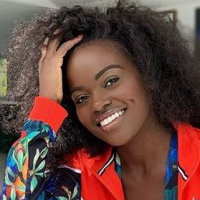
Silver was born in Rwanda and returns there regularly combining humanitarian projects with dance. She has created numerous dances for Hollywood, including mst famously This is America, with "Childish Gambino" (Donald Glover). 12.
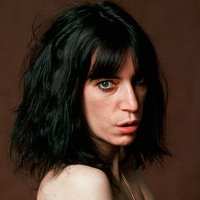
Smith has been called the "poet laureate of punk rock." She burst on the scene in 1975 with her debut album Horses. Her most famous song, "Bacause the Night" (1978), was co-writen with Bruce Springsteen. She was inducted into the Rock and Roll Hall of Fame in 2007. She was the long-term partner of photographer Robert Mapplethorpe. 11.
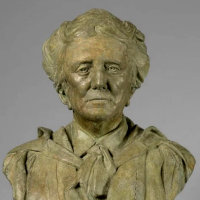
Dame Ethel Smyth was known as much for her political and feminist activism as for her music, which was strongly influenced by her training and early career in Germany. Her best-known opera, The Wreckers (1906) contains some excellent music. 7.
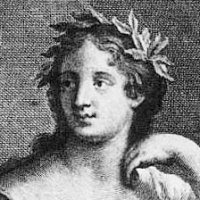
Listed by the Italians as one of the greatest poets of any gender, Stampa grew up in a cultured family, whose Venetian salon attracted artists of every kind. Her 300+ sonnets are mostly dedicated to her lover Count Collatino di Collato, and are couched equally in love and pain. 3.

Gertrude Stein comes into this course as the American expatriate whose salon in Paris hosted the likes of Hemingway, Fitzgerald, Pound, Matisse, and especially Picasso. But of course she was a Modernist poet in her own right, writing in a terse enigmatic style that is often quoted. 10.
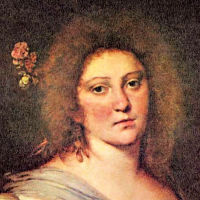
Barbara was the adopted (and perhaps natural) daughter of the Venetian librettist Giulio Strozzi, celebrated as a virtuoso singer while still in her teens. In many ways, her many composition for voice preserve what must have been the extraordinary dramatic intensity and expressive daring of her own performances. [The painting by Bernardo Strozzi shown here is only traditionally supposed to be her portrait.] 3.
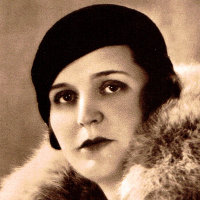
Tailleferre was the only female member of Les Six, a group of young French composers (Auric, Durey, Honegger, Milhaud, Poulenc, and herself) who came to prominence in the 1920s. Although spending two extended periods in the US, she continued composing and teaching in France to the end of her long life. 9.
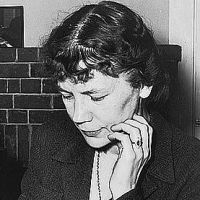
Talma's mother was an American singer working in France, where she was born. Although she grew up mainly in America, she returned regularly to France, and took up a sumer position there in the interwar years. She then became a respected professor at Hunter College and the winner of numerous awards, including two Guggenheim Fellowships and a total of 41 residencies at the MacDowell Colony. 10.
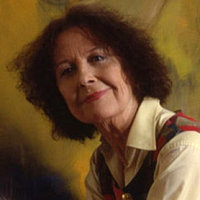
Tanning's earlier work was stongly influenced by Surrealism, which led her to meet and marry Max Ernst, one of the originators of that style. Campared to his, her work tends to be more highly colored and more distinctly autobiogaphical. 11.
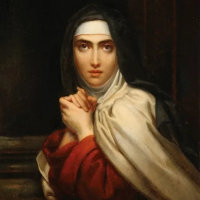
Saint Teresa was one of the leading figures of the Counterreformation, reforming the Carmelite orders of which she was a member. She is represented in art mainly for her ecstatic descriptions of mystical encounters with the divine, which she records in her published works. Her poetry is simpler, but also refreshingly personal. 2.
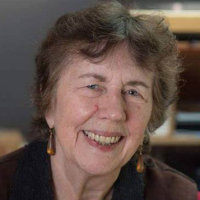
Tower began her career as a pianist, especially with the NY ensemble Da Capo Players, which she co-founded. Simultaneously, she was establishing a reputation as a composer, including a series of six works called Fanfare for the Uncommon Woman, each honoring a different American Woman in music. 11.
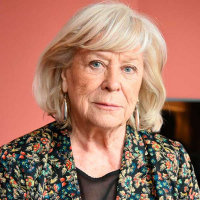
Von Trotta is hailed as a leading force in postwar German cinema, and has won many awards. Most of her films have been about women and their relationships. 2.
GO TO: [A–C] [D–F] [G–K] [L–N] [O–R] [S–U] [V–Z]
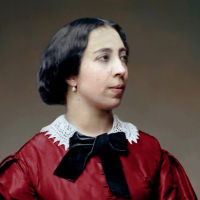
The daughters of opera singers, Pauline Garcia and her sister Maria Malibran were among the opera divas of the day. She retired from the stage in 1863 and devoted herself to composing, writing five chamber operas and numerous songs. 7.
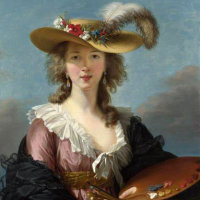
Specializing in portraiture, Vigée-Lebrun had charm and wit to match her talent, which won her many influential patrons, most notably Queen Marie Antoinette. She fled France at the Revolution and lived in London, Italy, Vienna, and St Petersburg, where she was part of the court of Catherine the Great. Her memoirs are a vital testament of her times and her own remarkable strengths as a woman. 4.
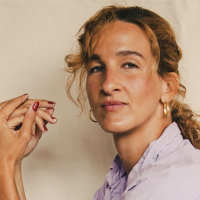
Raised and trained in Bratislava, Katarina Janeckova met and married an American and moved with him to Corpus Christie, TX. Her colorful and deliberately cartoonish work explores the confusion she finds in her new land, as well as her own womanhood. 12.
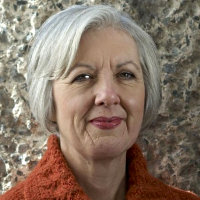
Dame Judith Weir was born in Cambridge to Scottish parents. Using a comparatively conventional musical language in new ways, she has written operas, orchestral, and chamber works, and has had a distinguished career as a teacher. She was appointed Master of the Queen's Music (composer laureate) in 2014. 12.
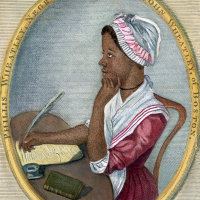
"Wheatley is considered the first African-American author of a published book of poetry. Born in West Africa, she was kidnapped and subsequently sold into enslavement at the age of seven or eight and transported to North America, where she was bought by the Wheatley family of Boston. After she learned to read and write, they encouraged her poetry when they saw her talent, and emancipated her soon after." [Wikipedia] Though celebrated for a while, she died in poverty at the age of 31. 5.
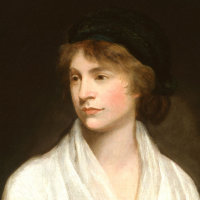
Mary Wollstonecraft, wife of the anarchist philosopher William Godwin and mother of the future Mary Shelley, was one of the most original women of her age, breaking numerous conventions of decorum. She was a first-hand witness of the French Revolution, and published an analysis of its moral significance. Her most important work for subsequent generations, however, was A Vindication of the Rights of Woman (1792), a foundation document of feminism. 11.
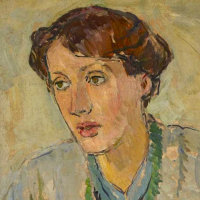
"Virginia Woolf (née Stephen) is considered one of the most important modernist 20th-century authors and a pioneer in the use of stream of consciousness as a narrative device." [Wikipedia] Most of her novels, which include Mrs Dalloway (1925) and To the Lighthouse (1927), were published by the Hogarth Press, which she founded with her husband, the philosopher Leonard Woolf. Together with her sister, painter Vanessa Bell, the three were core members of the Bloomsbury Group. She suffered from bipolar disorder most of her life, and drowned herself at the age of 59. 9, 11.
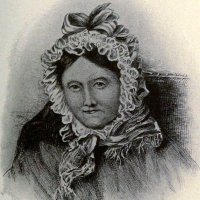
Dorothy was the beloved sister of poet William Wordsworth and his lifelong companion. Although she had no ambitions for publication herself, it has been shown that many of William's poems draw freely on his sister's journals, making them in effect co-authors. 6.
